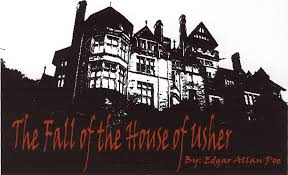The Fall of the House of Usher by Edgar Allan Poe
The Fall of the House of Usher by Edgar Allan Poe
The Fall of the House of Usher”
possesses the quintessential -features of the Gothic tale: a haunted house,
dreary landscape, mysterious sickness, and doubled personality. For all its
easily identifiable Gothic elements, however, part of the terror of this story
is its vagueness. We cannot say for sure where in the world or exactly when the
story takes place. Instead of standard narrative markers of place and time, Poe
uses traditional Gothic elements such as inclement weather and a barren
landscape. We are alone with the narrator in this haunted space, and neither we
nor the -narrator know why. Although he is Roderick’s most intimate boyhood
friend, the narrator apparently does not know much about him—like the basic
fact that Roderick has a twin sister. Poe asks us to question the reasons both
for Roderick’s decision to contact the narrator in this time of need and the
bizarre tenacity of narrator’s response. While Poe provides the recognizable
building blocks of the Gothic tale, he contrasts this standard form with a plot
that is inexplicable, sudden, and full of unexpected disruptions. The story
begins without complete explanation of the narrator’s motives for arriving at
the house of Usher, and this ambiguity sets the tone for a plot that
continually blurs the real and the fantastic.
Poe
creates a sensation of claustrophobia in this story. The narrator is
mysteriously trapped by the lure of Roderick’s attraction, and he cannot escape
until the house of Usher collapses completely. Characters cannot move and act
freely in the house because of its structure, so it assumes a monstrous
character of its own—the Gothic mastermind that controls the fate of its
inhabitants. Poe, creates confusion between the living things and inanimate
objects by doubling the physical house of Usher with the genetic family line of
the Usher family, which he refers to as the house of Usher. Poe employs the
word “house” metaphorically, but he also describes a real house. Not only does
the narrator get trapped inside the mansion, but we learn also that this
confinement describes the biological fate of the Usher family. The family has
no enduring branches, so all genetic transmission has occurred incestuously
within the domain of the house. The peasantry confuses the mansion with the family
because the physical structure has effectively dictated the genetic patterns of
the family.




Comments
Post a Comment